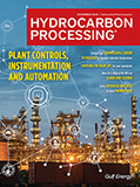Improve plant maintenance programs by keeping CUI in check
If not adequately addressed, corrosion under insulation (CUI) has dangerous and costly consequences, including a greater risk of heat losses, increased energy usage, unplanned downtime, leaks and spills.
IP: 10.3.138.59
This is a preview of our premium content. Thank you for your interest—please
log in or
subscribe to read the full article.
The Authors
R. Seto - Rockwool, Milton, Ontario, Canada
Ricky Seto is a seasoned professional mechanical engineer with more than 10 yr of expertise in designing piping systems for industrial processes. His extensive knowledge stems from his work as a consulting engineer, where he spent significant time in the field. For the past 7 yr, he has served as the Technical Services Manager at ROCKWOOL Technical Insulation, leveraging his experience to oversee technical support for customer’s insulation solutions.
A. Sebastian - Rockwool, Houston, Texas
Abraham Sebastian is a mechanical engineer with 20 yr of experience in the insulation and coatings industry, including 15 yr at ROCKWOOL. Currently serving as the Technical and GKAM Manager-Americas in Houston, Texas (U.S.), Sebastian specializes in technical solutions, business development and key account management, driving growth and innovation across the industry.
Related Articles
From the Archive






Comments